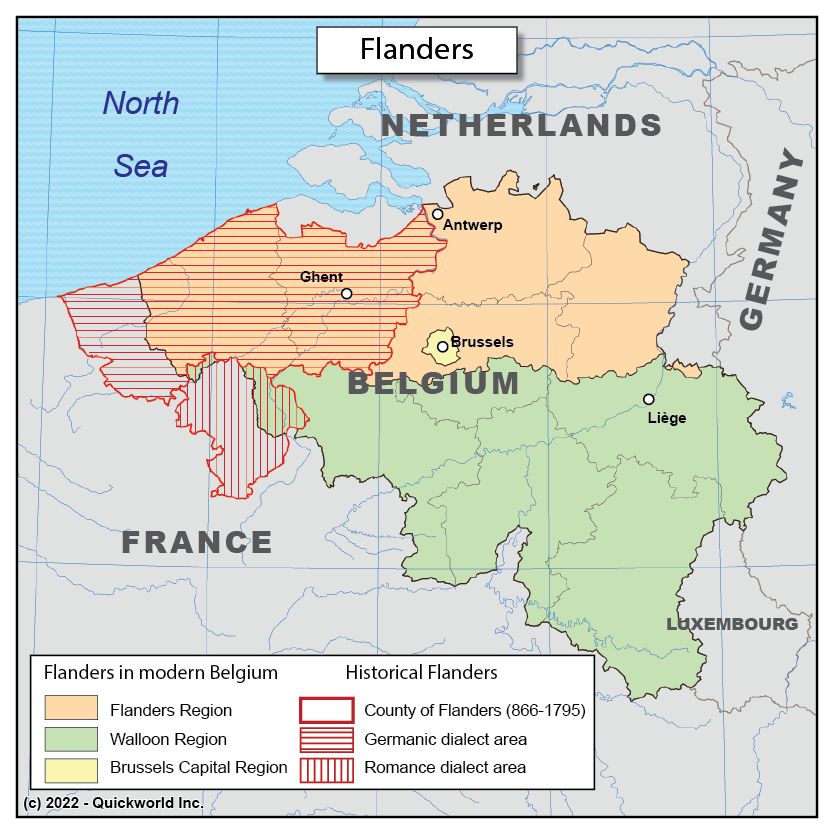Our "What's in a name" series explores the evolution of the term "Flanders" in history. Historically, Flanders was a county of the Carolingian Empire, which became part of Western Francia, later the Kingdom of France, upon the partition of the Empire. The count of Flanders was one of only twelve people who were considered a peer by the King. After a period during which the County was part of the States of Burgundy, whose territories spanned across both the Kingdom of France and the Holy Roman Empire, they fell under the jurisdiction of the Austrians, and later were part of the Spanish crown. The French king annexed parts of southwestern Flanders, particularly the cities of Lille and Dunkirk, in 1667, and the rest of Flanders were transferred back to the Austrians in 1713. The region was annexed by France during the Revolution, and was then transferred to the Netherlands, and finally became part of Belgium in 1830. Southern Flanders remained French.
The interesting point is that Flanders has come to take a different meaning, as the modern "Flanders Region" represent an area that only covers part of the old county, and includes other parts of Belgium such as Brabant and Limburg. "Flanders" has become essentially synonymous with "Dutch speaking Belgium", and Flemish a shortcut for "Dutch dialects spoken in Belgium", even though these are neither unified nor limited to the original region of Flanders. While the majority of the old county currently resides within the modern Flanders Region, there is a small part of traditionally French speaking Flanders located in Wallonia (around the City of Tournai) and another part in France (around Lille). There is also a part of traditionally Dutch speaking Flanders that is located in France: the Westhoek, around the city of Dunkirk.
Flanders


